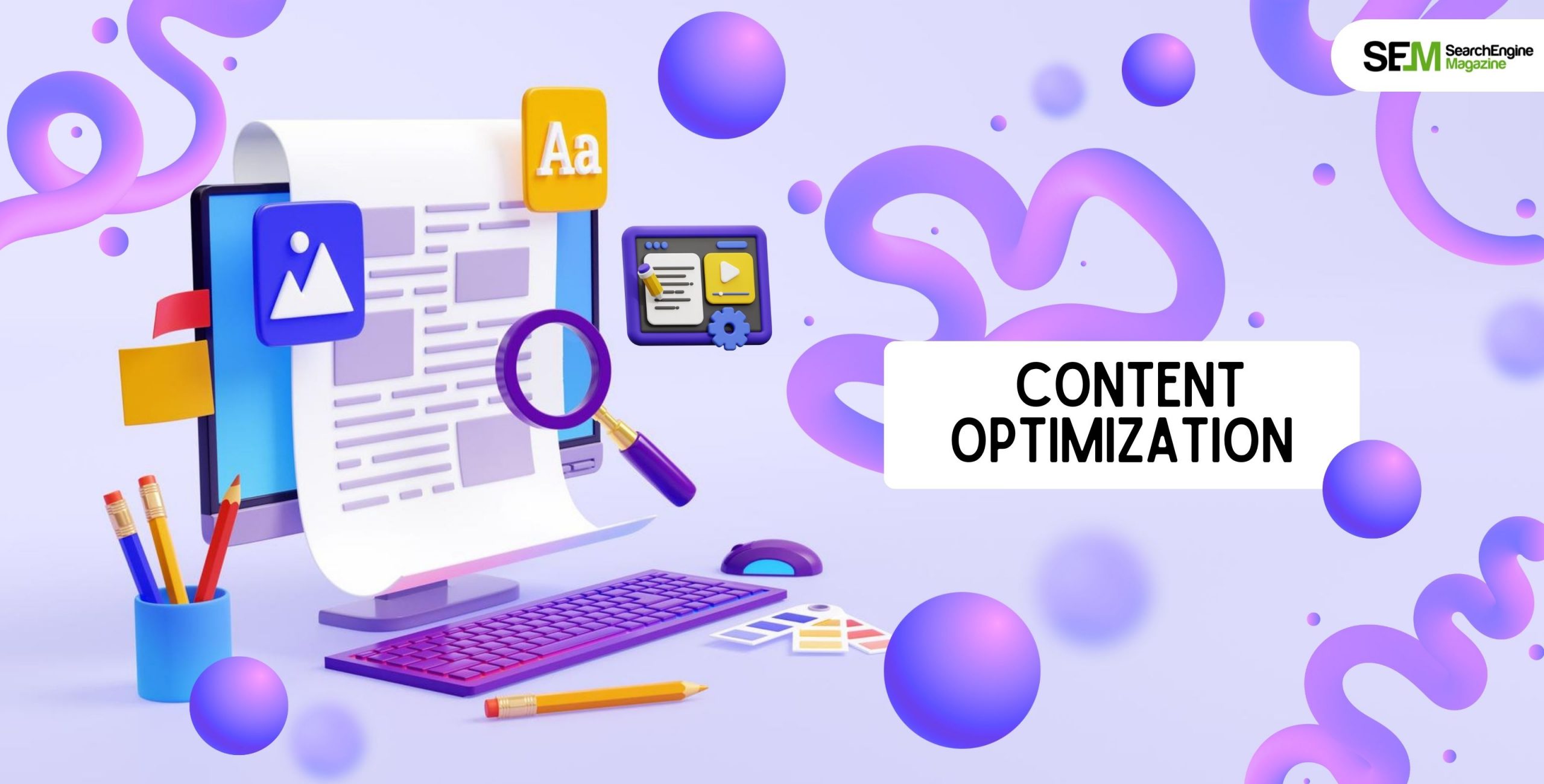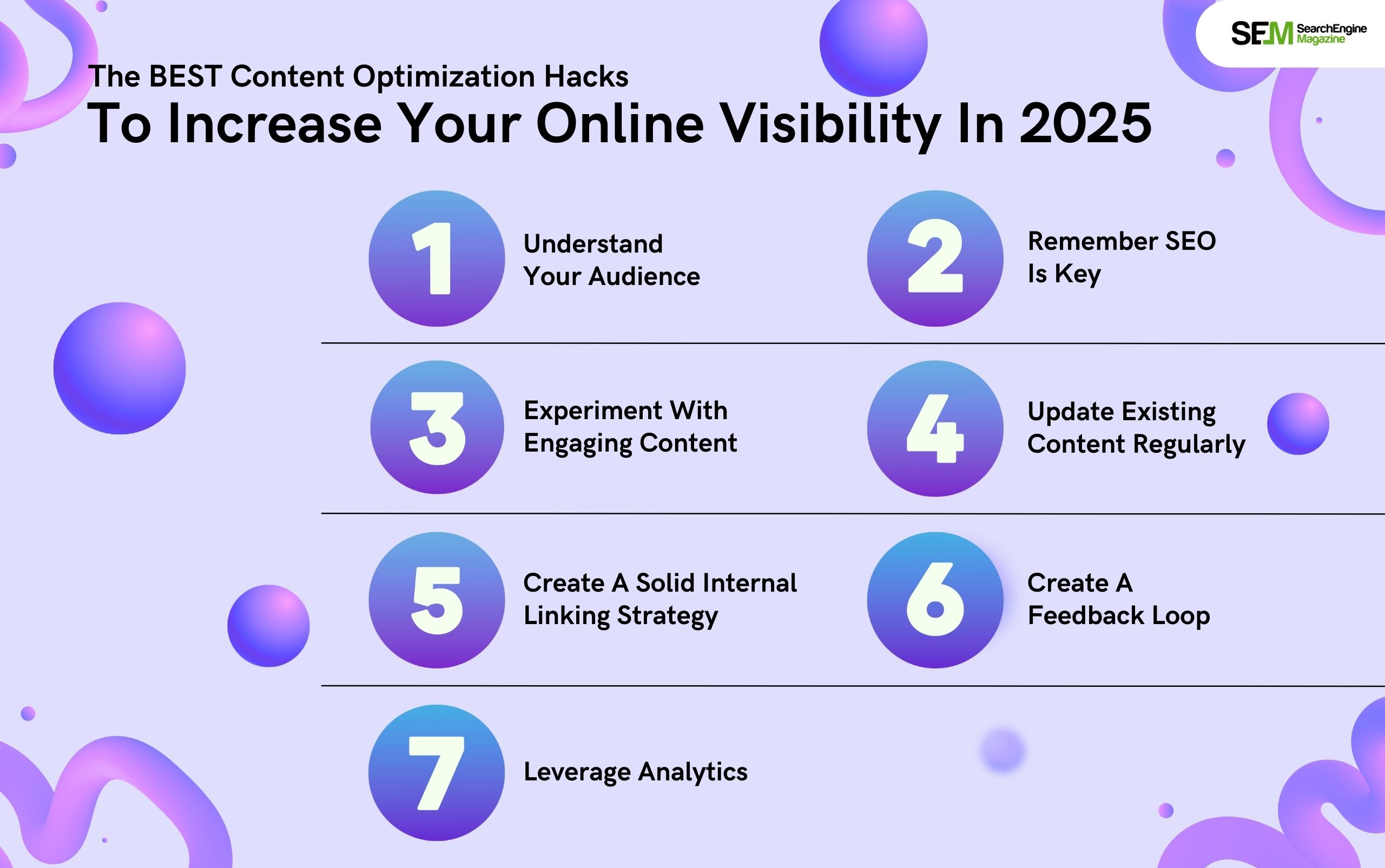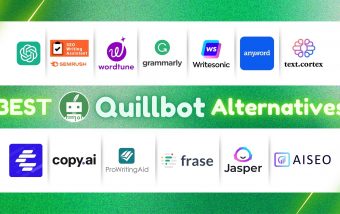Pinterest Marketing: How To Create A Promotional Strategy?
Dec 24, 2025

Dec 24, 2025

Dec 23, 2025

Dec 23, 2025

Dec 23, 2025

Dec 22, 2025

Dec 22, 2025

Dec 22, 2025

Dec 22, 2025
Sorry, but nothing matched your search "". Please try again with some different keywords.


Content optimization – it does sound so easy, doesn’t it? How difficult can it be to optimize content as per SEO guidelines. Or how hard can it be to optimize your content in a way it will boost your online visibility in 2025?
Not much – at least that’s what I thought, and ardently believed till February 2024.
However, everything changed post Google’s 2024 March Update that heavily penalized any website for having content that failed to add value. Google’s update made one thing very clear – create content that adds value. If your content is not helpful then you will not make it to the top SERPs.
Needless to say, my website was penalized for 9 months. As per Google’s content guidelines, a lot of my content was ‘spammy’ and that was enough for Google to take action. But then it took me close to 8 months to revive the website, just in time for the Spam update of December.
And if you ask me how? I have only one solution – content optimization, especially if your website was penalized for content issues. Yes, you have to clean your website and send Google signs that something positive is being done on your website.
That is precisely what I did – and today, I am here to share my content optimization hacks that yielded results for me.
Stay tuned!

So, without wasting time, let’s check out the BEST content optimization hacks to increase your online visibility in 2025:
Before diving deep into optimizing content, it’s imperative to grasp who your primary audience is.
Take the time to conduct comprehensive surveys, gather insightful feedback, and deeply analyze the website traffic patterns. This will paint a clearer picture of what your potential audience and current readers are genuinely seeking from your website.
The worries and questions of your audience are multifaceted — spanning from generic issues to specific challenges.
Moreover, by actively addressing the pain points of your audience in your content, you not only provide clarity but also present an image of a brand that cares. Additionally, highlighting your content’s unique strengths while offering solutions to common concerns can immensely enhance user trust.

In the vast realm of SEO, the integration of keywords stands paramount. Beyond the general terms, delve into niche keywords that resonate with your content and what your website offers. Leveraging tools such as Google’s Keyword Planner can simplify this hunt.
Often overlooked, these concise descriptions can make or break a searcher’s decision to click. Crafting descriptions that are both inviting and informative ensures you capture the curiosity of potential audiences.
Modern readers often browse on the go. It’s no longer sufficient for a website to be merely mobile-friendly. It needs to be mobile-optimized. This encompasses rapid page load speeds, intuitive navigation, and content that adapts flawlessly to various screen sizes.
The adage that a picture is worth a thousand words has evolved. In today’s digital age, a well-crafted video or infographic can convey complex messages with simplicity.
For instance, you are running a blog for college students: Now, imagine showcasing a day in the life of a student or illustrating intricate academic processes through engaging visuals. When you think about it, the whole content becomes so much more engaging as compared to basic text-based static content!
In addition, beyond static content, interactivity plays a crucial role in keeping a visitor’s attention. Interactive campus maps, engaging quizzes about college history, or polls about upcoming events can transform passive viewers into active participants.

The digital world is in constant flux. To remain relevant and current, regular content updates are non-negotiable. So, considering you are running a college website, you have to focus on spotlighting alumni achievements, detailing recent campus additions, and updating course specifics.
Modifying your existing content lies at the heart of content optimization – here, freshness is key. Beyond just ensuring accuracy, refreshing content can reinvigorate interest in your college website or blog.
It’s not just about presenting the latest information but weaving a narrative that captures the dynamic spirit of the campus. Updated content can generate increased traffic, make old content feel new again, and demonstrate to students — both current and prospective — that the institution is proactive and in step with the times.
Moreover, it doesn’t matter what website you are working on – modifying existing content is as important as creating fresh content. The whole content ecosystem primarily depends on two things – creating new content and updating existing content.
Strategic internal linking serves dual purposes: it guides visitors seamlessly through the website while bolstering SEO. For example, a blog post discussing time management could lead to a page on the school’s counseling services or academic workshops.
Internal linking is more than just merging related pages. It’s about designing an interconnected user journey. Proper internal linking can lead a visitor on a journey that paints a vivid picture of campus life. It also minimizes bounce rates by offering users more pertinent content to delve into, strengthening their bond with the website and possibly enhancing subscribing likelihood.

Interaction is mutual. Welcoming opinions, thoughts, and even constructive criticisms strengthens community ties and provides a profound understanding of impactful content.
In a time when everyone desires to be heard, creating a space for feedback on your website or blog signifies an embracing stance. It goes beyond just collecting information. It’s about establishing rapport.
So, when visitors see that their perspectives are valued and considered, it cultivates commitment. Plus, this active feedback channel can address concerns early on, leading to efficient processes and more contented participants.
In the digital landscape, insights drive decisions. Utilize tools such as Google Analytics to monitor website health. Evaluating elements like user locations, trending topics, and visitor actions can yield valuable findings to sharpen your content approach.
While graphs and statistics may seem intimidating at first glance, they unfold a unique narrative. Delving into these analytics exposes trends — identifying standout content, peak user activity times, or regions with heightened engagement. These aren’t merely numbers.
They form a roadmap for content development, enabling a bespoke strategy that aligns with the audience’s preferences and desires.
In today’s swiftly changing digital world, fine-tuning content isn’t a luxury. It’s a necessity. So, when you optimize your content, it can boost your content’s performance on the search engine and drive conversions.
If you have not been optimizing your content for better results then take this a sign – give it a few months and monitor your performance during that time closely. Come back and tell me after three months – did it work, or are you still struggling?
Barsha is a seasoned digital marketing writer with a focus on SEO, content marketing, and conversion-driven copy. With 7 years of experience in crafting high-performing content for startups, agencies, and established brands, Barsha brings strategic insight and storytelling together to drive online growth. When not writing, Barsha spends time obsessing over conspiracy theories, the latest Google algorithm changes, and content trends.
View all Posts

